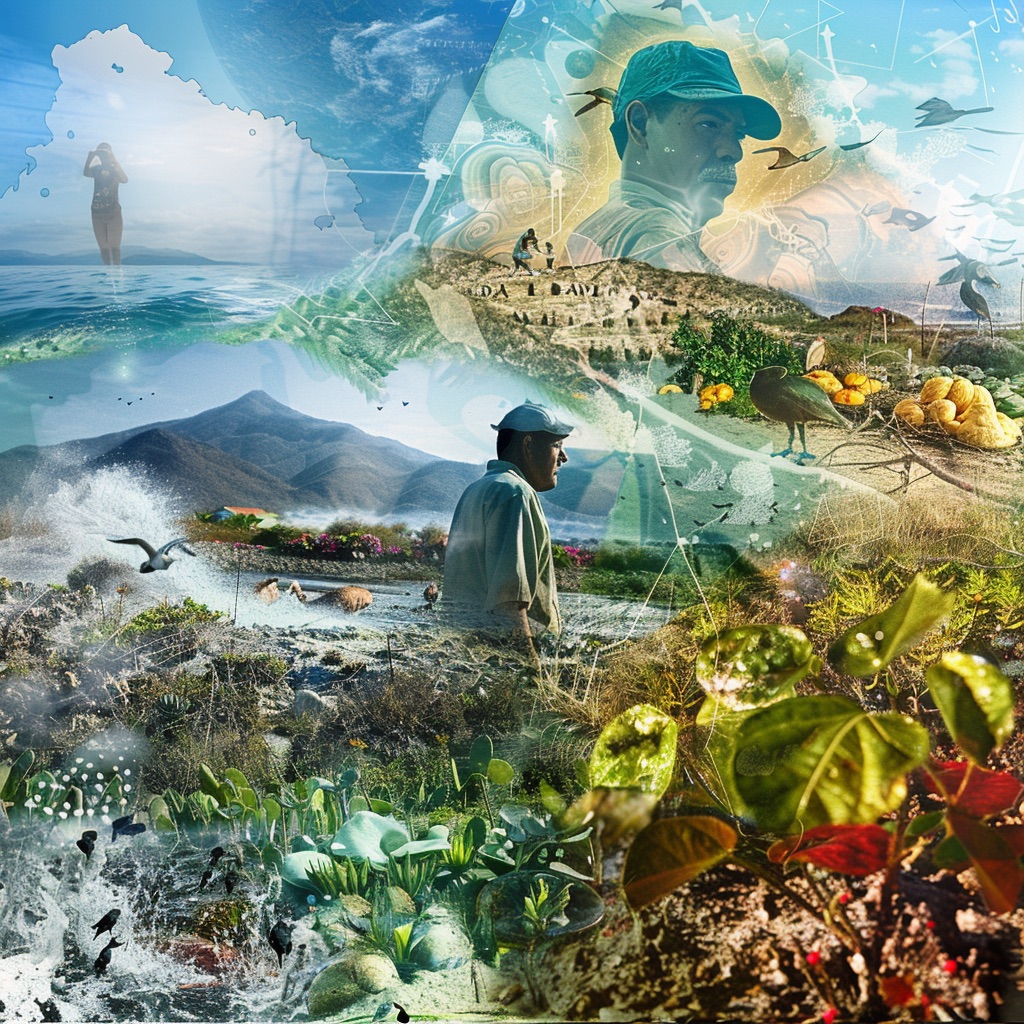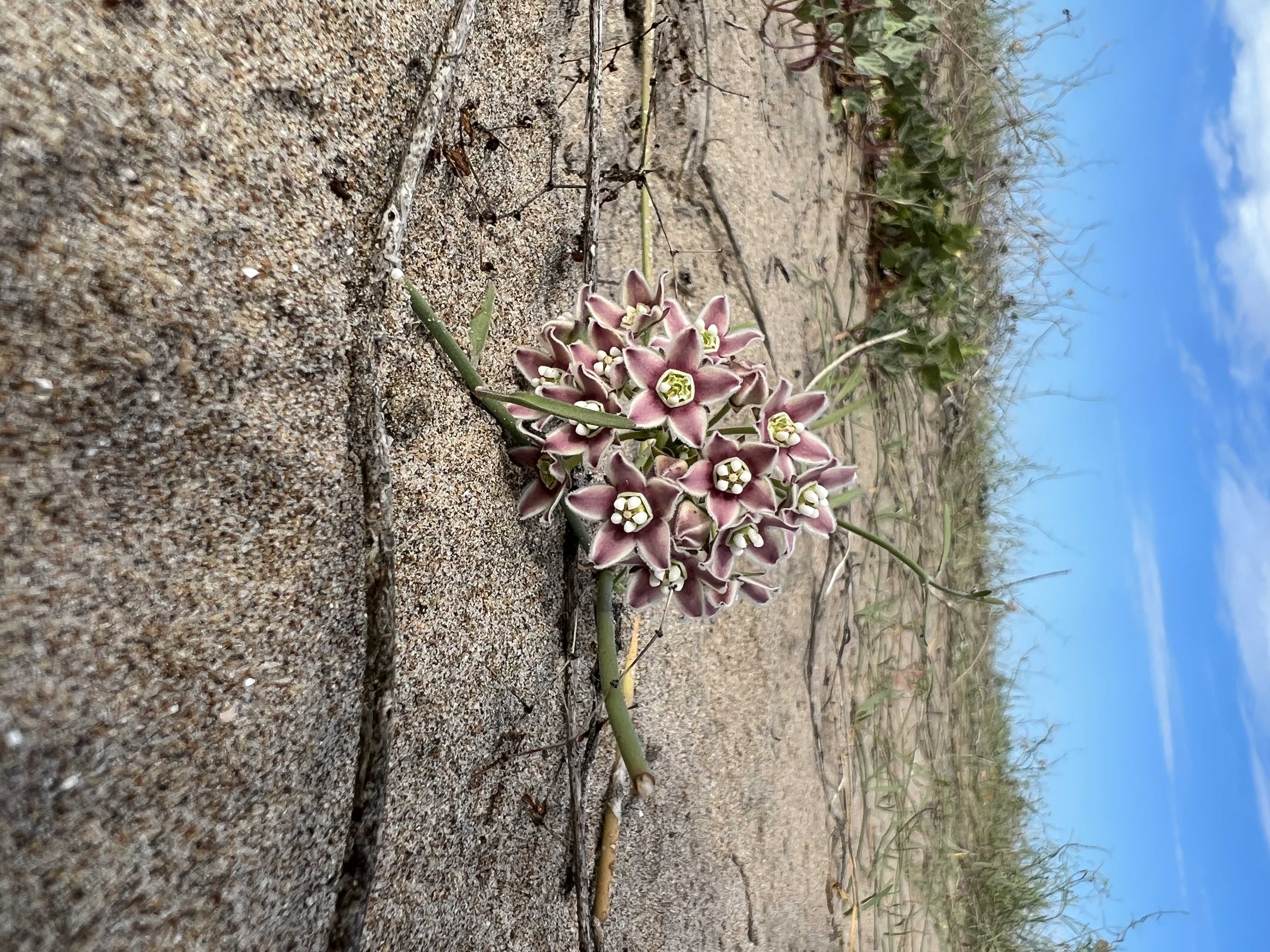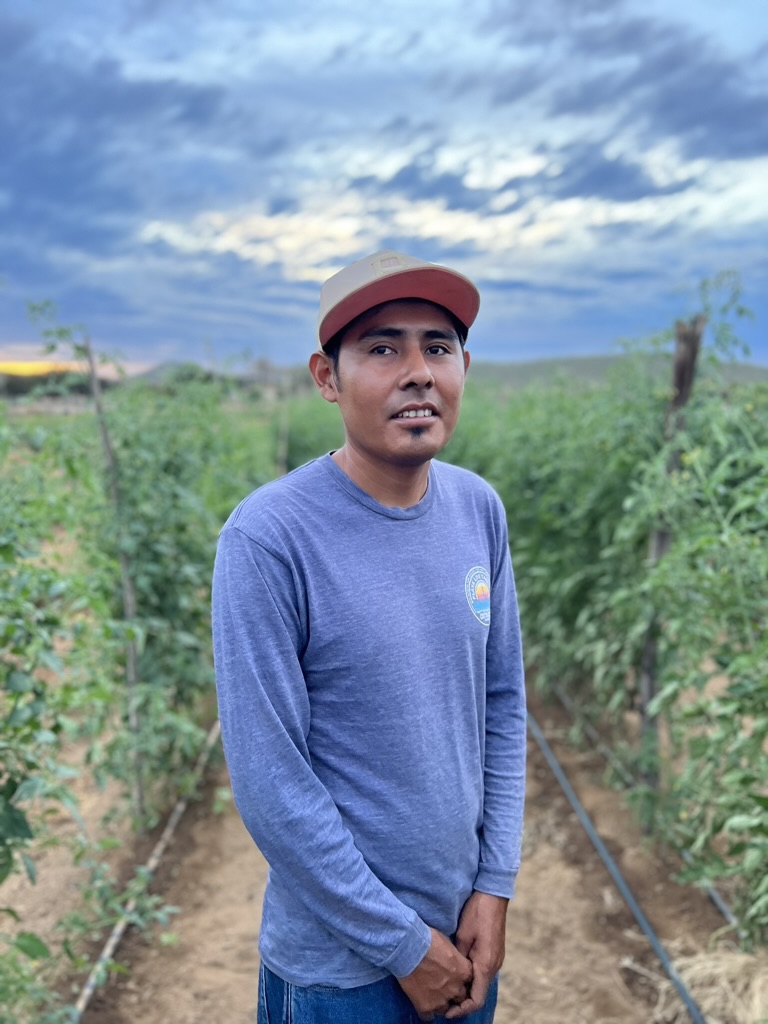
Baja California Sur
In the largely lifeless dunes of Bahia Magdalena, Climbing Milkweed’s beautiful bloom provides welcome nectar for butterflies and the Rufous hummingbird on its annual 4,000 miles migratory odyssey from its breeding grounds in Alaska to wintering sites in Baja California Sur.
The weed’s miraculous blossom is a marvel of Mother Nature as it rarely rains in this picturesque corner of Baja, forcing the delicate flower to spread itself horizontally across the dunes to capture what moisture it can from the sea breeze that drifts in off the Pacific Ocean.
Besides providing sustenance for long-distance hummingbirds, the resilient root structure of this strategic climber binds together the dunes that form a natural barrier to the crashing waves of the Pacific.

These dunes in turn provide the shelter to humpback whales that join the roufus on its arduous journey south from Alaska every January. The protected shallow bays of Magdalena Bay are the preferred habitat for whales to train their newborn calfs how to swim.
Without the weed there would be no whales. Without the hummingbird there would be no weeds. Good hosts and good visitors coming together in a reciprocal dance that has evolved for Millennium. Everything is connected and nature knows best.
The flower’s five pretty petals act like a human hand holding the power to sustain life in the midst of the desert.
It is just one of the plethora of the nonhuman Champions of Baja California Sur that inspires us daily to build a stronger and healthier food chain, one that supports both migratory visitors and the sedentary species that have inhabited our bioregion for centuries.
There are other champions of Baja California Sur that inspire us to learn from and listen to our landscape.
Throughout the short 3.8 billion year history of life on our planet, Life has evolved by valuing or championing those species, processes, patterns, systems, forms that create the greatest conditions conducive to more Life.
By contrast, it is nature’s way to send those that weaken conditions conducive to Life to the extinction pool.
Those species that enrich this delightful daily dance of the species continue to play the lottery of life while the rest will join the 99% of animals, plants and organisms that have already ceased to exist on planet earth.
Systems that threaten or challenge this simplistic axiom end up collapsing, replaced by others that are more resilient and better placed to adapt to life’s indomitable march.
Many of the systems that currently dominate our own daily existence are at odds with this irresistible natural law.
Our global economic systems have largely been decoupled from the planet’s ecological systems. Our economies have been built on the premise that the products and services derived from the Earth’s ecosystems are more valuable than the actual ecosystems from which they are sourced.
This extractive model has led to intensive mining and industrial farming, resulting in depleted soils, which in many instances are now unable to withstand life.
“Our financial and neoliberal system works in the opposite way to Life,” says Carolina Fernandez-Jansink, co-founder of regenerative agency, Dear Wise Earth. “These systems assign value in a way that encourages and compels the extraction of Life. This value system design affects many places (cities, countries and other regions) as long as they operate under the global financial system, including Baja California Sur.”
The value placed on scarce resources by our current extractive financial system flies directly in the face of nature’s way of championing species and systems that create abundance through reciprocity and collaboration with other species and systems. Rebuilding these symbiotic relationships within the existing zero sum financial system of winners and losers is a huge challenge.
“The financial and neoliberal systems do allow for windows of opportunity to open where it is possible to operate in different ways. In ways where a redefinition of value is agreed,” says Fernandez-Jansink however. “For that to happen communities must decide to educate themselves and readjust their value systems. They must choose which myths they embrace and which they prefer to reject if we are to continue to play the lottery of life.”
Baja California Sur is rich in stories and champions that serve us in this journey towards new (old) myths and stories that encourage us to revalue the practices, people, places, species and systems that clearly and intentionally exist to bring more Life to the region (and consequently devalue those that inhibit, weaken and undermine Life in the region).
“If we can redefine heroism to focus on those that strengthen the regenerative capacities of the system, by bringing attention to both human and non-human species that create conditions conducive to Life, and prioritizing the more relatable or tangible examples, such as a specific species (cardon) or ecosystems (wetlands), then our species can (re)connect to the indisputable Wisdom of the place and all the species that have evolved to support Life in the region.”

Edgar Roman, a dedicated entrepreneur from Mexico City with a successful restaurant, Don Sanchez, in Cabo San Jose has been showcasing the region’s delicacies for two decades. He has worked tirelessly to support and uplift the local food chain in all of his ventures.
But like the Rufous hummingbird, Edgar and the wider culinary community in Baja California Sur, face a pressing challenge to find local nutrients.
Despite the rich culinary traditions of Baja California Sur, Edgar and others like him, have become alarmed by the gradual disappearance of local traditions, recipes and ingredients and the region’s increasing reliance on imported supplies in the restaurants and hotels springing up along the peninsula.
“We have very important growth in terms of visitors that have now become locals. We are at this crossroads where many actors need to get involved. Every time a new chef arrives from abroad as a community of chefs we try to embrace them so that they know and understand what is happening,” says Edgar. ”They should understand that there is no need to bring salmon by plane and make a whole circus, acrobatics and theater to put it on the table when we are blessed by the aquarium of the world right here and it is also an aquarium that is being taken care of, it is a place where responsible aquaculture is of quality. This is so important.”
As the local food chain has gravitated towards imported produce divorced from the holistic rhythm of nature’s seasons, it has weakened the very ecosystems within which this seasonal tourism industry is nested.
And any industry, no matter how prosperous, cannot thrive if the environmental and social systems it depends on are weakened.
As tourism relies increasingly on ingredients from the Mexican mainland and the US, climate emergencies that cut supply lines have highlighted the fragile nature of the region’s dependence on food from elsewhere.
Likewise imported food for a transient population of tourists and visitors with little connection to the locality leads to more than 220,000 tonnes of food being wasted every year, often as it makes its way to the hotels and restaurants of Baja California Sur.
Imported food is expensive too. Overpriced imports means that workers and their families, shipped in to build the hotels and resorts to the south, often cannot afford to feed their families three times a day.
Edgar’s not alone in seeking to strengthen the food system in Baja California Sur. There are other heroes seeking to reconnect with the Wisdom of Place. Farmers and restaurateurs listening to the landscape and investing in regenerative agriculture.

Ivhan Santiago’s relationship to food was transformed in 2020, when his first daughter was born. Despite having very little experience in farming, being a father sparked a desire to set out on a journey to grow healthier food for his family.
His first efforts were built on traditional farming methods. Seduced by the promises of fertilizer salesmen, he invested in fossil fuel-based inputs to supercharge his growth only to see all his money wiped away in two years with very little to show for it.
Broke but not defeated, he started over in a new spot, this time inspired by other farmers already listening to the landscape, he replaced synthetic fertilizers with organic compost, which while it took longer yielded much better tasting results.
Now his small plot of land on the outskirts of Todos Santos produces organic salad produce for restaurants like Edgar’s. Good news travels as fast as his good-tasting tomatoes and sprouting purple broccoli. Ivhan sells out of his organic produce before its ready to be picked.
“I don’t need to advertise, people taste my broccoli and my tomatoes and want to buy all of it. It started with one restaurant who liked my tomatoes but pretty soon there were others that had tried the food and wanted to buy as well,” he says. “We started with half a hectare and now I have 3 hectares of land and I’ve had to take on help and the most important thing is I love to see my daughter eat the food because I know there’s no poison in it.”
Heroes like Edgar and Ivhan understand the value of healthy food and a resilient food system as well as the need to invest in strengthening it for future generations. A fragile, unhealthy food chain serves no one well.
Their customers — also heroes — understand that while they pay more for organic and local produce they get way more than they pay for when they help strengthen the food chain for everyone.
Redefining heroism in this way is part of Alianza de Seguridad Alimentaria de Baja California Sur’s (ASA) mission to create spaces for dialogue between champions like Edgar and Ivhan. ASA seeks to organize collaborative networks that will encourage others to transform and co-create an equitable, healthy, resilient, and sustainable food system for Baja California Sur.
Like the flower of the Climbing Milkwood, ASA has five petals, each one designed to help strengthen the local food system in Baja California Sur by attracting farmers like Ivhan to pollinators like Edgar and the organization of hotels and restaurants he leads, Betel.
ASA is focused on five main areas that together strengthen the region’s food system:
Celebrating the species and systems that support life in Baja California Sur
Listening to the landscape, learning from nature